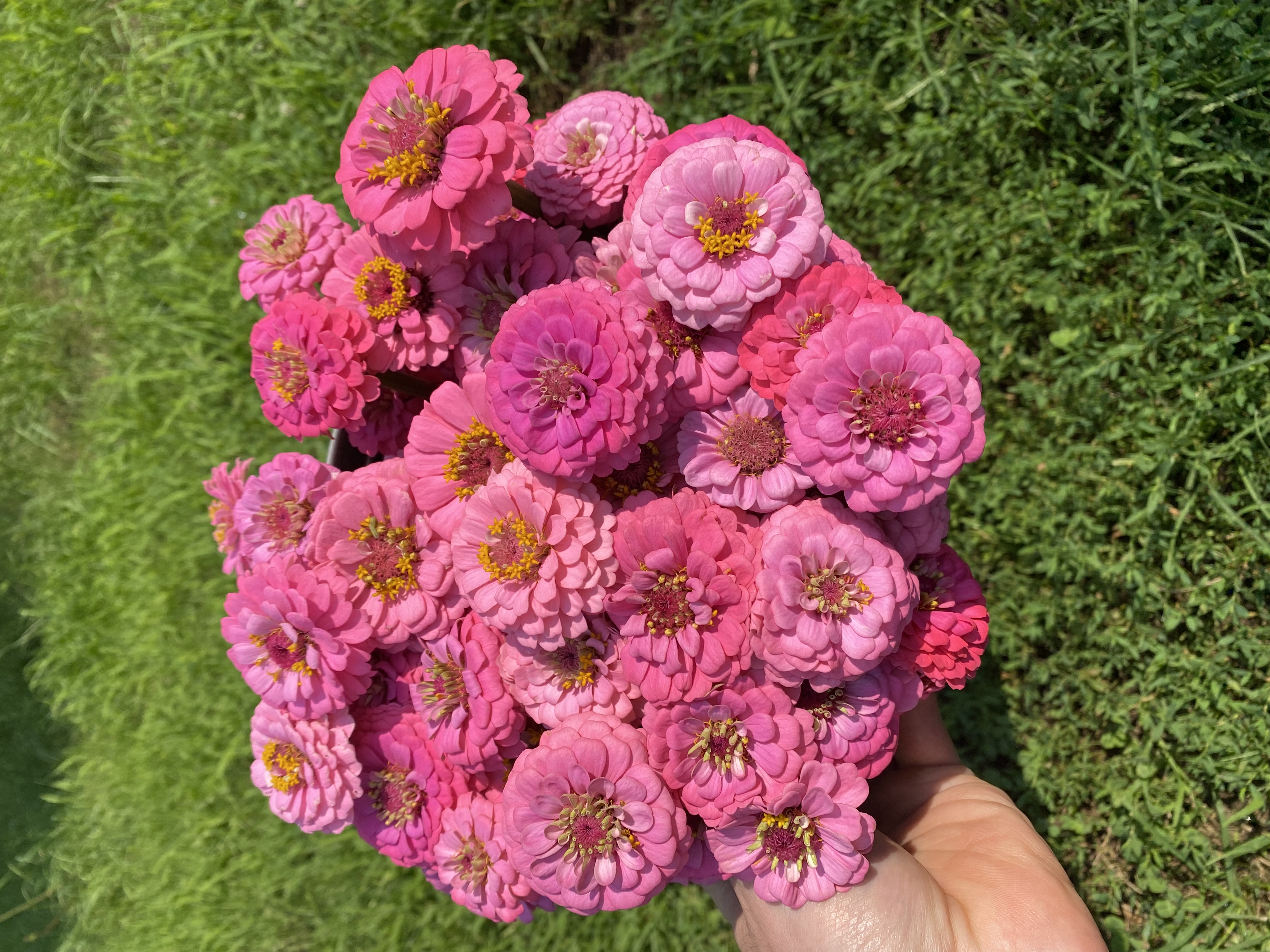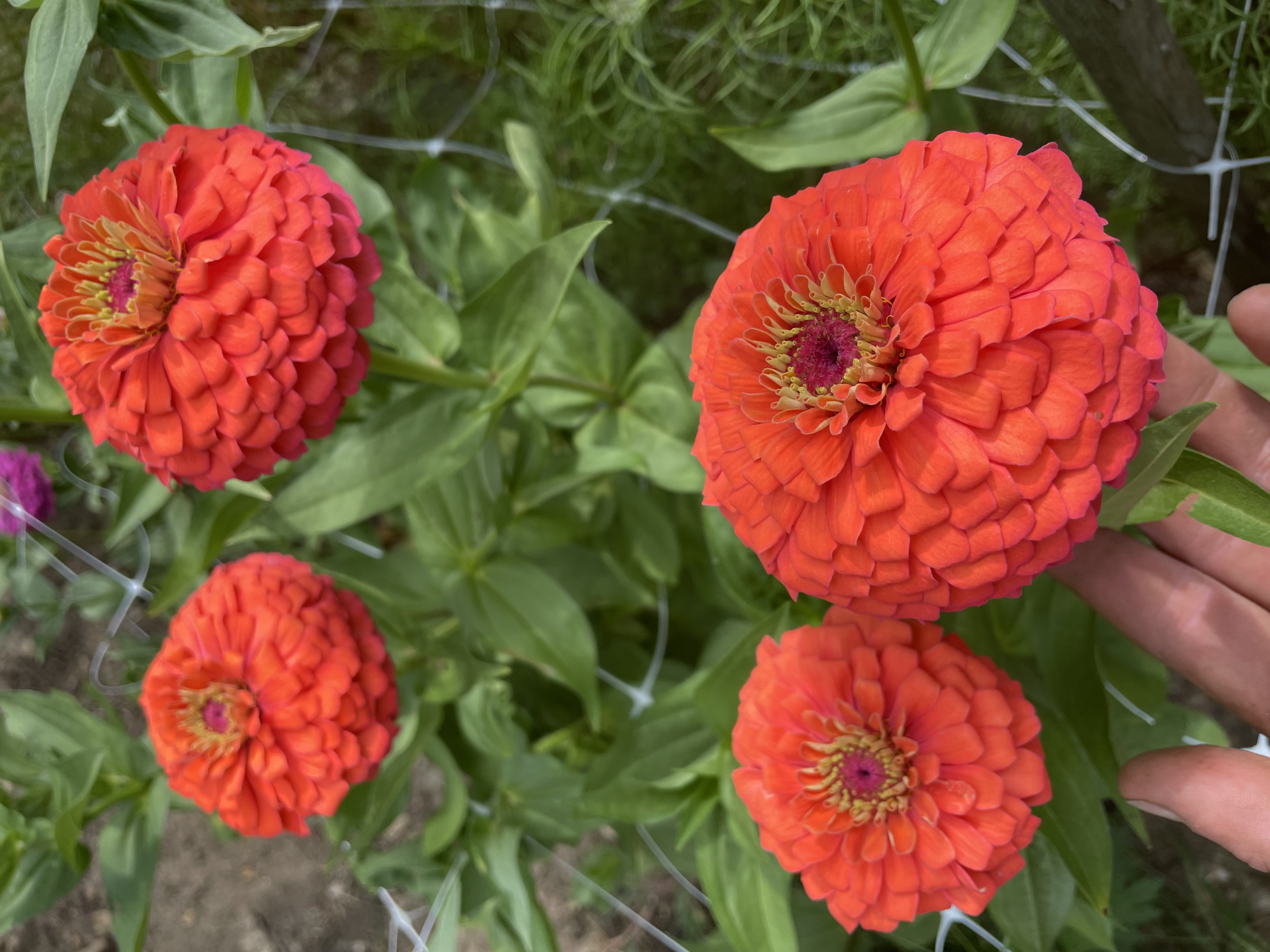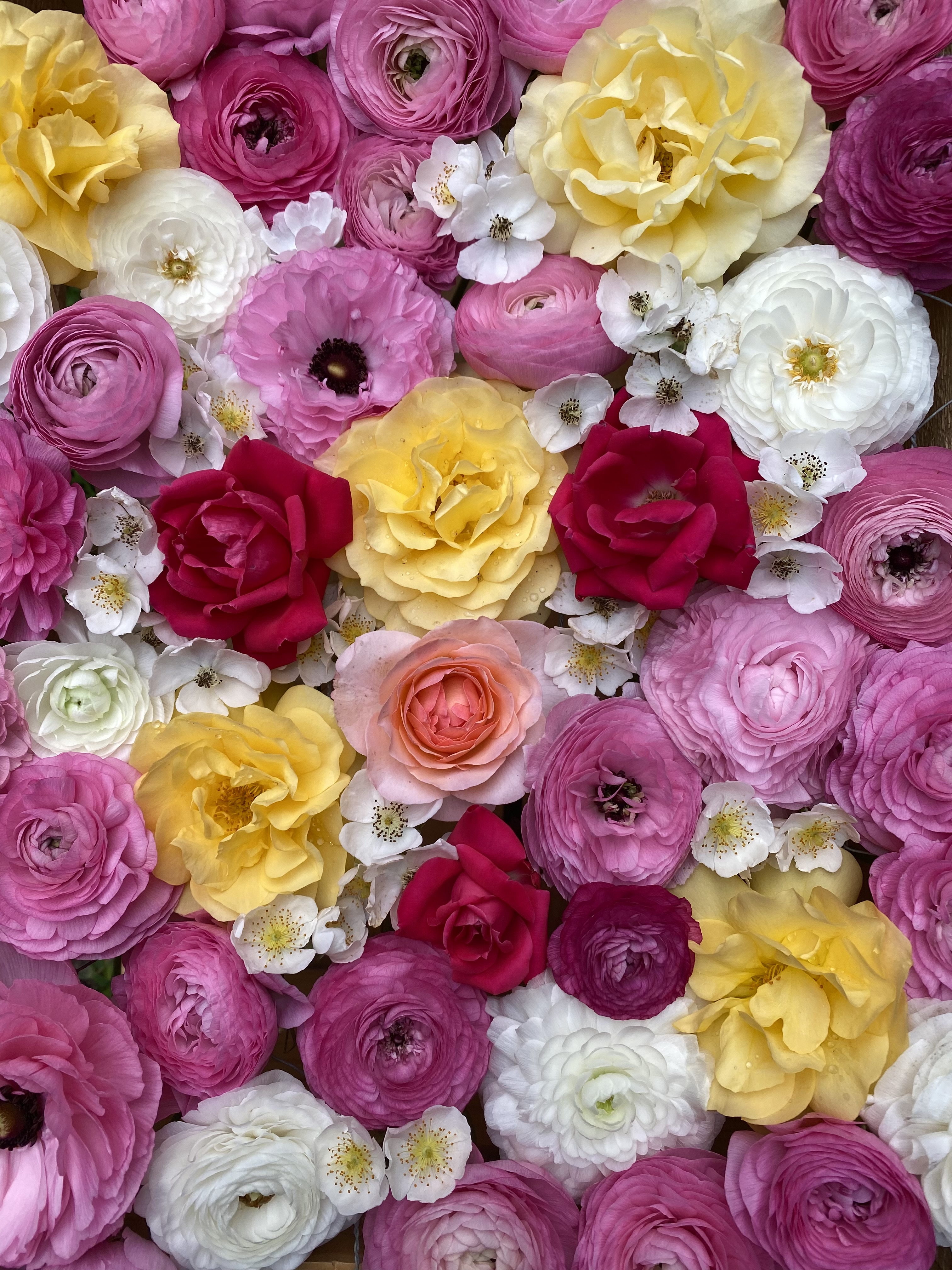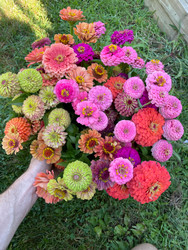How to Grow Zinnias
Posted by Bernard Henry on Aug 23rd 2022
Zinnias are the work horse on our flower farm! They're one of my favorite because they're a "cut and come again" flower! This just means you can cut and cut, and they'll continue to bloom all the way until the first frost. These flowers love the heat and are extremely drought tolerant, which is great if you're in a drier zone!
Here in Connecticut, I start my zinnias indoors 4-5 weeks before my last frost, which usually falls somewhere in late mid to late May. You can also direct sow them into the ground after the last frost has passed if you don't want to plant them in trays! The only advantage to planting indoors is earlier blooms!

Plant zinnias 9 inches apart! It may look like too much space, but trust me, come late summer they'll be massive bushes! The less crowded they are, the more airflow between them, which means less chance of powdery mildew and other diseases that zinnias are prone too!

These Oklahoma Pinks in the picture above get massive for me over the summer, with the right conditions, zinnias may need support to prevent them from falling over. I use Hortonova netting, which adds the perfect amount of support to help keep them up throughout the season. An example of what the netting looks like is in the picture below!

When your zinnias get about 8 to 12 inches tall, you should top them to promote the growth of the lower and lateral branches. This makes for a bushy plant, with more blooms! It might seem scary at first to chop off a few inches from each plant, but trust me they will recover!
To keep your zinnias blooming all summer, you'll need to continue to deadhead them, this just means chopping off spent blooms from the plant to allow new ones to grow! If your goal is to save seeds next year, leave a few of the spent blooms on the plant. The zinnia heads will turn a dark brown and feel dry to the touch when ready to harvest. The seeds will be at the end of most petals as you pull them out from the bloom. Place them on a drying rack, and allow them to dry completely before storing for next year. (Pictures on each step coming soon). To avoid disappointment, it's important to note that the zinnias will not breed true the following season as they were open pollinated.

